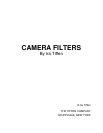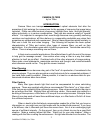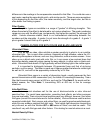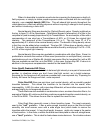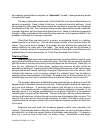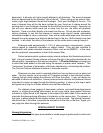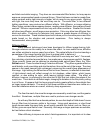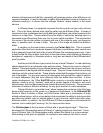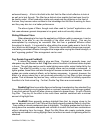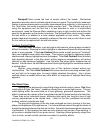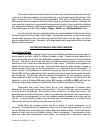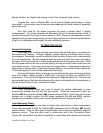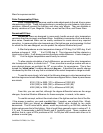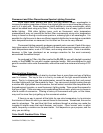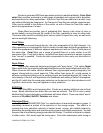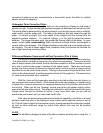
CAMERA FILTERS © Ira Tiffen
6
dependent. A blue sky will not be equally affected in all directions. The areas of deepest
blue are determined by the following "rule of thumb." When setting up an exterior shot,
make a right angle between thumb and forefinger. Point your forefinger at the sun. The
area of deepest blue will be the band outlined by your thumb as it rotates around the
pointing axis of your forefinger, directing the thumb from horizon to horizon. Generally, as
you aim your camera either more into or away from the sun, the effect will gradually
diminish. There is no effect directly at or away from the sun. Do not pan with a polarizer,
without checking to see that the change in camera angle doesn't create undesirable
noticeable changes in color or saturation. Also, with an extra-wide-angle view, the area of
deepest blue may appear as a distinctly darker band in the sky. Both situations are best
avoided. In all cases, the effect of the polarizer will be visible when viewing through it.
Polarizers need approximately 1-1/2 to 2 stops exposure compensation, usually
without regard to rotational orientation or subject matter. They are also available in
combination with certain standard conversion filters, such as the 85BPOL. In this case,
add the polarizer's compensation to that of the second filter.
Certain camera optical systems employ internal surfaces that themselves polarize
light. Using a standard (linear) polarizer will cause the light to be further absorbed by the
internal optics, depending on the relative orientation. A Circular Polarizer is a linear one
to which has been added, on the side facing the camera, a quarter wave "retarder." This
"corkscrews" the plane of polarization, effectively depolarizing it, eliminating the problem.
The Circular Polarizer otherwise functions in the same manner.
Polarizers can also control unwanted reflections from surfaces such as glass and
water. For best results, be at an angle of 33 degrees incident to the reflecting surface.
Viewing through while rotating the polarizer will show the effect. It may not always be
advisable to remove all reflections. Leaving some minimal reflection will preserve a sense
of context to a close-up image through the reflecting surface. A close-up of a frog in water
will appear as a frog out of water without some tell-tale reflections.
For relatively close imaging of documents, pictures, and small three-dimensional
objects, in a lighting-controlled environment, as on a copy stand, large plastic Polarizers
mounted on lights aimed at 45 degrees to the subject from both sides of the camera will
maximize the glare-reducing efficiency of a polarizer on the camera lens. The camera, in
this case, is aimed straight at the subject surface, not at an angle. The lighting Polarizers
should both be in the same, perpendicular orientation to the one on the lens. Again, you
can judge the effect through the polarizer.
SPECIAL EFFECT FILTERS
General Information
The following filter types are available in a wide range of grades useful in both color



